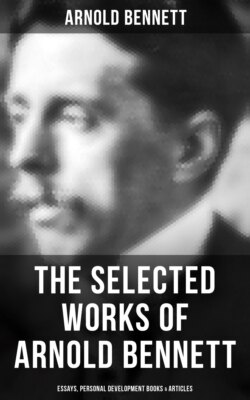Читать книгу The Selected Works of Arnold Bennett: Essays, Personal Development Books & Articles - Arnold Bennett - Страница 71
На сайте Литреса книга снята с продажи.
Characterisation.
ОглавлениеThe tyro usually thinks that in fictional writing there is a special conscious business of “drawing the character.” There is not. Characters can not be “drawn”; at any rate they cannot be “drawn” convincingly. They can only be shown in action. As long as the character performs no mental or physical act, the character will not live. You may assert that your hero is clever or brave till your nib is worn out, but you will not convince a single reader of the fact until you make your hero act in a clever or brave manner. Characterisation can be achieved solely through the creator’s own clear vision of the character.
When you have got your character on the scene, you must force yourself to see and realise him as an actual person. It is your own vision of him that counts. Let me reiterate: It is your own vision of him that counts. If he is clear to you, his sayings and doings will, without conscious management on your part, combine together harmoniously to produce a clear vision in the mind of the reader. If he is not clear to you, the effect on the reader will be correspondingly blurred. There is no other method of arriving at characterisation. Of course a certain amount of exterior description and of incidental explanation or exposition is necessary. But such passages must be regarded merely as an adventitious aid to characterisation; they are not the characterisation itself.
Descriptions of figures are often useful, but descriptions of facial detail are almost invariably quite futile. If your heroine is beautiful, say so as briefly as possible; the rendering of facial beauty is the province of the painter, not of the artist in words. Marked peculiarities of feature or gesture should be noted, but on no account should they be frequently insisted on, so as to “label” a character. The “labelling” dodge is a bad one. It gives no real individuality to the person “labelled,” and affords no insight to the reader. You may say that your villain, John Smith, has a trick of exclaiming, “Well, really!” And you may compel him to exclaim, “Well, really!” each time he opens his mouth. But the device will do nothing whatever to assist the reader to realise what John Smith truly is. If you encounter in the street a man with one ear every day for a twelvemonth, you may know nothing about him at the end except the fact that he has one ear.
Characterisation, the feat of individualising the characters, is the inmost mystery of imaginative literary art. It is of the very essence of the novel. It never belongs to this passage or that It is implicit in the whole. It is always being done, and is never finished till the last page is written.
